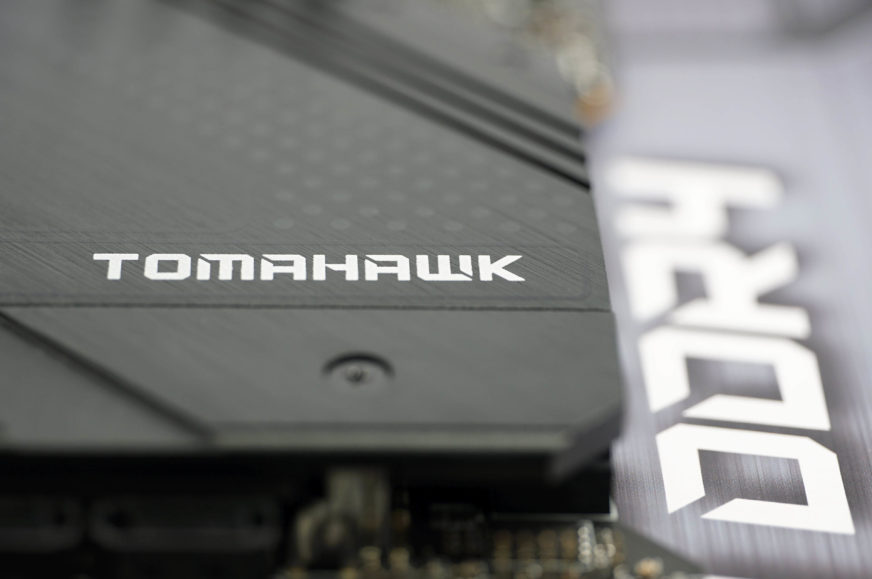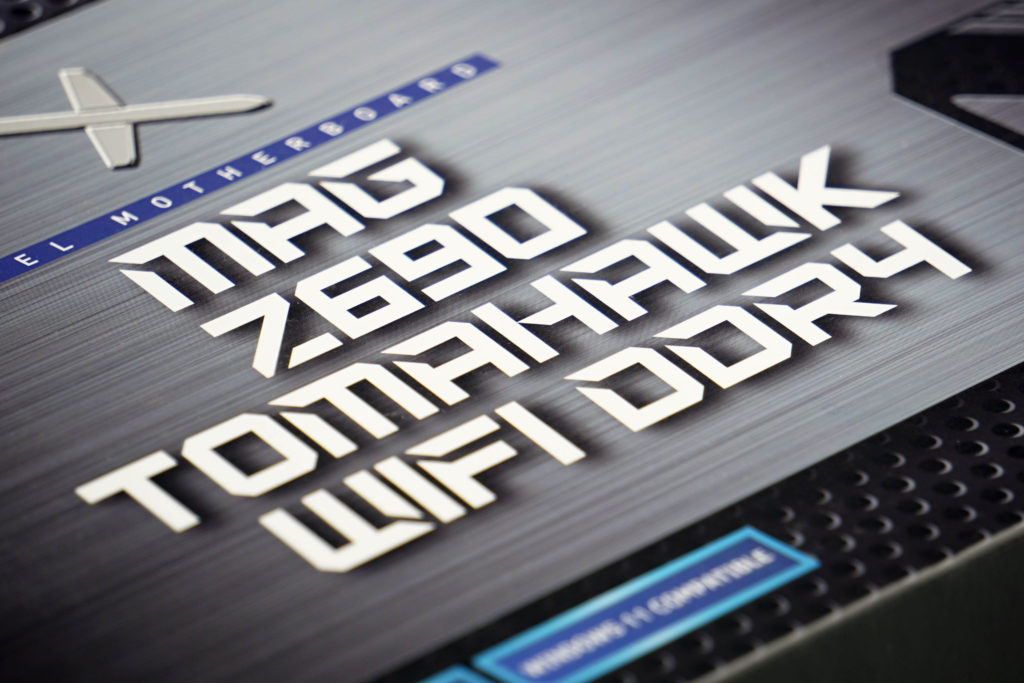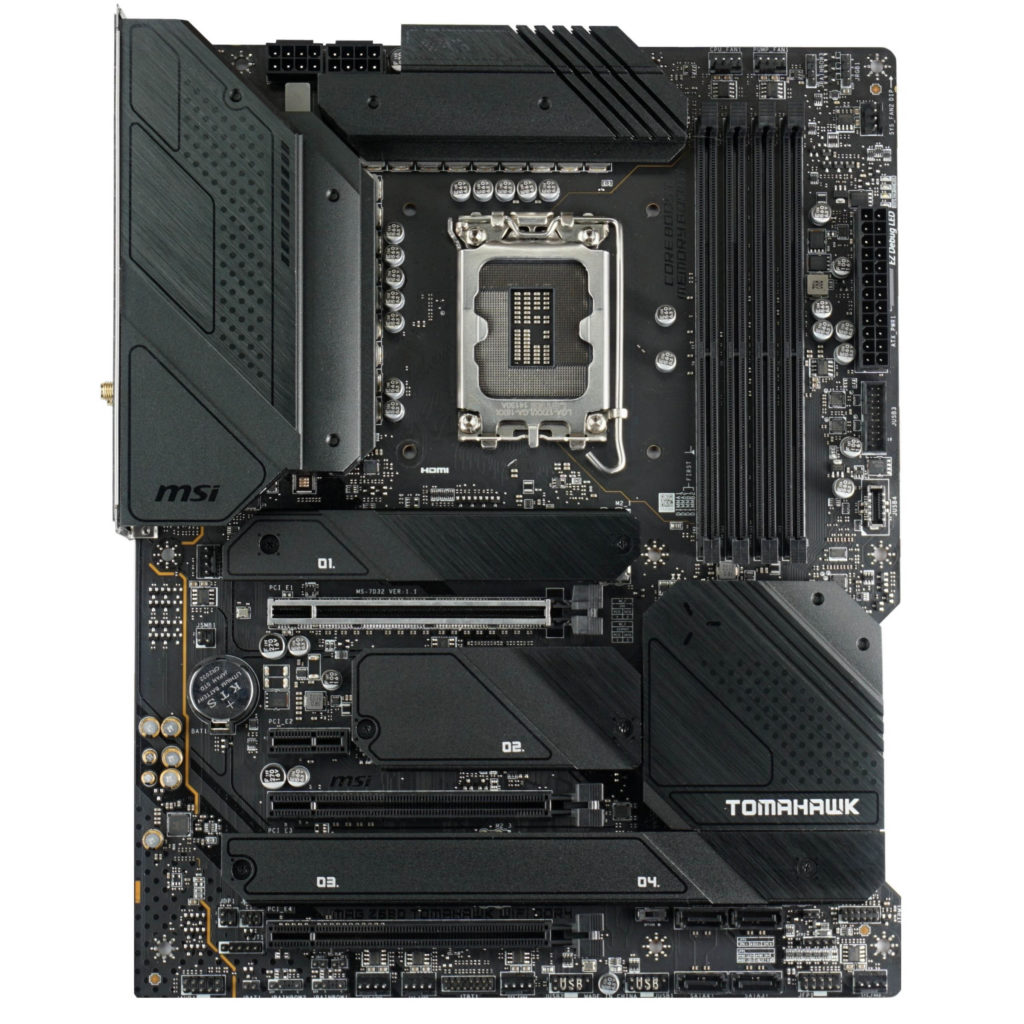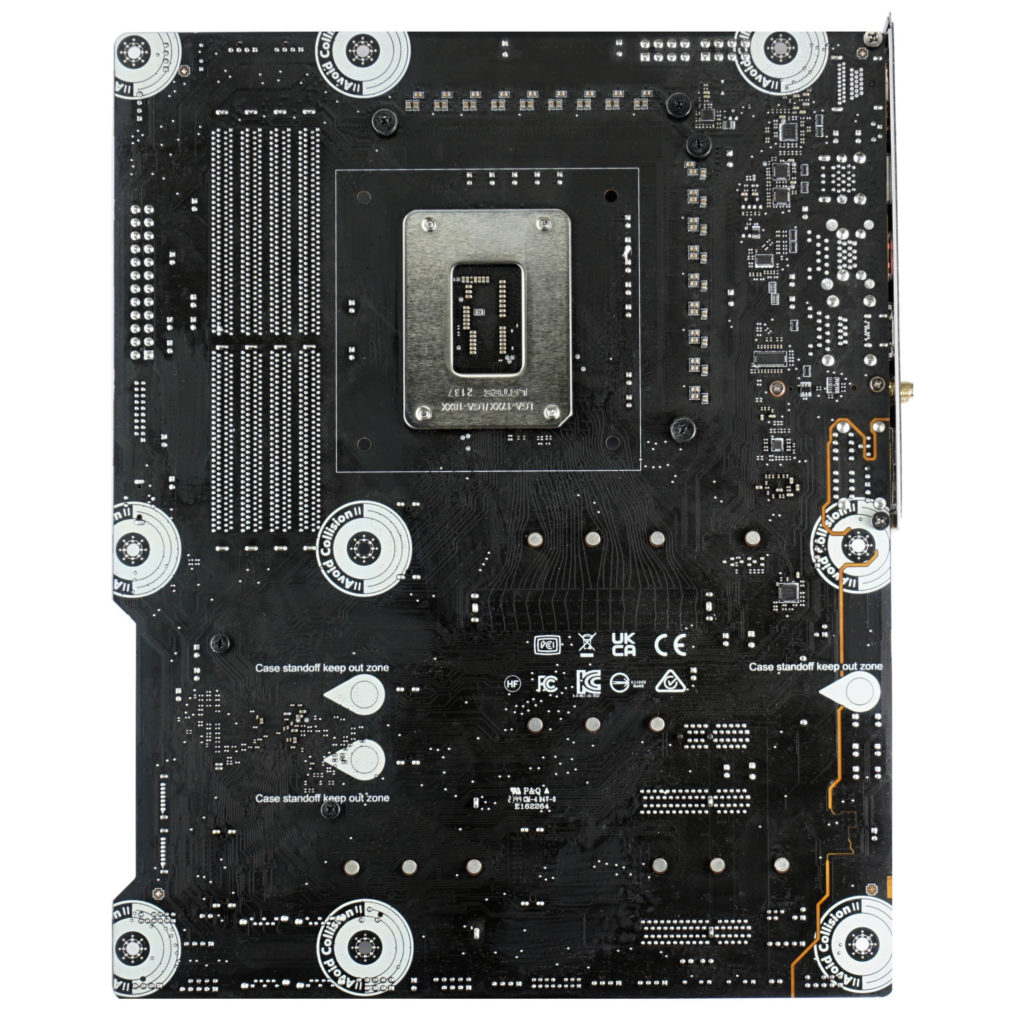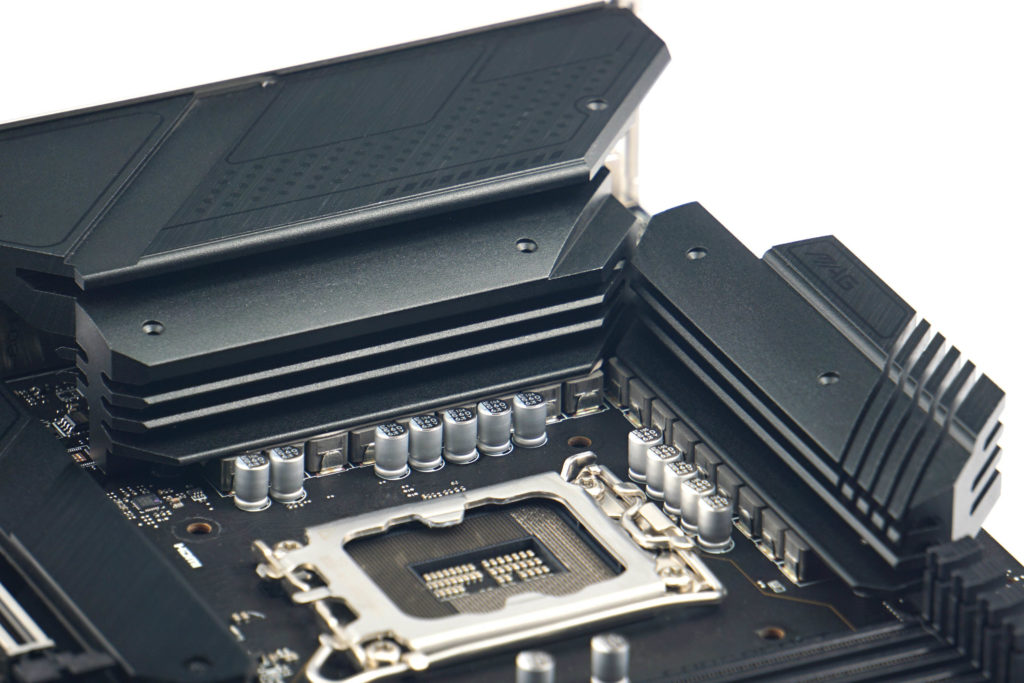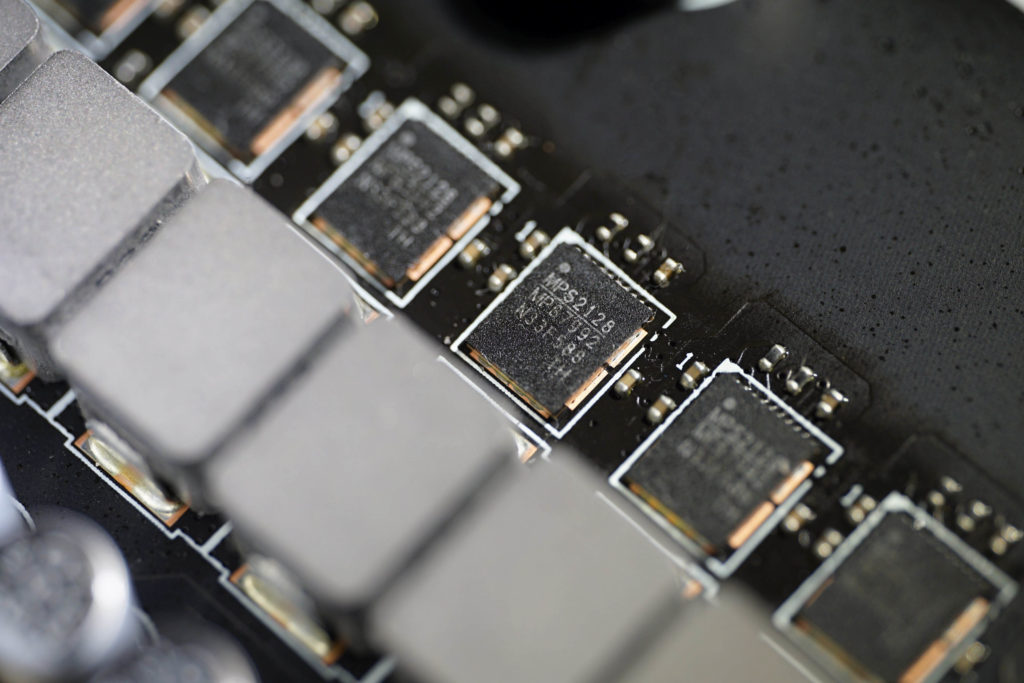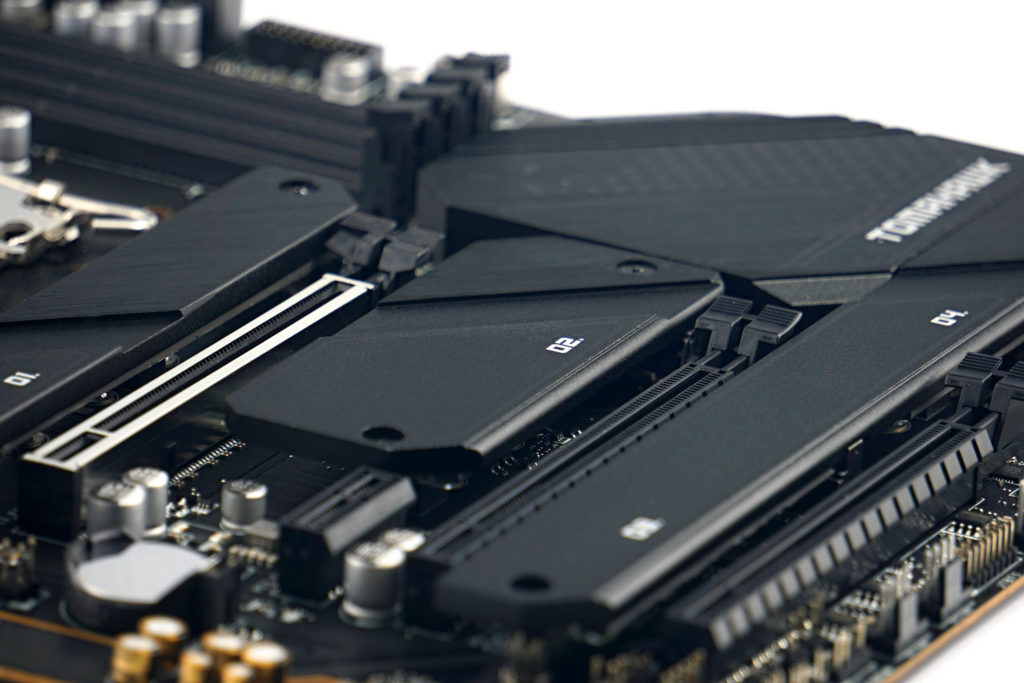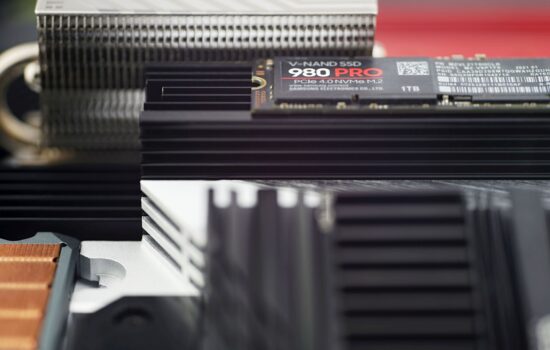MSI MAG Z690 Tomahawk WiFi DDR4 in detail
From the B660 motherboard tests, we now move on to Z690. These are always better equipped at least at the chipset level. One of the main advantages is the ability to manually overclock processors with an open multiplier. The Tomahawk DDR4 seems to be an option that has a well prepared VRM for such performance boosts while still keeping to an affordable price. The important thing though is what kind of board it is from an overall perspective.
The Z690 boards push the envelope naturally in other aspects as well, such as pushing the multiplier on processors that allow it. The south bridge of the chipset has double the number of PCI Express 3.0 and 4.0 lanes compared to the B660, so more SSD connectors can be brought out to the boards, and there’s also support for RAID 0, 1 and 5 in PCIe as well.
A faster, 8-lane (as with the H670) DMI 4.0 interface for communication between the south bridge and the north bridge (in the processor) is also available. Finally, the Z690 is also significantly richer in USB ports of all speed standards. While motherboards with the most feature-rich chipsets for mainstream Intel platforms typically come out at a premium, they are better prepared for PC builds with more expensive processors, which are generally held to higher standards.
| Parameters | MSI MAG Z690 Tomahawk DDR4 | |
| MSI MAG Z690 Tomahawk DDR4 | ||
| Socket | Intel LGA 1700 | |
| Chipset | Intel Z690 | |
| Format | ATX (305 × 244 mm) | |
| CPU power delivery | 18-phase | |
| Supported memory (and max. frequency) | DDR4 (5200 MHz) | |
| Slots PCIe ×16 (+ PCIe ×1) | 3× (+ 1×) | |
| Centre of socket to first PCIe ×16 slot | 91 mm | |
| Centre of socket to first DIMM slot | 56 mm | |
| Storage connectors | 6× SATA III, 3× M.2 (42–110 mm): 3× PCIe 4.0 ×4 + 1× PCIe 4.0×2 | |
| PWM connectors for fans or AIO pump | 8× | |
| Internal USB ports | 1× 3.2 gen. 2 type C, 4× 3.2 gen. 1 type A, 4× 2.0 typ A | |
| Other internal connectors | 1× Thunderbolt with RTD3 support, 1× TPM, 3× ARGB LED (5 V), 1× RGB LED (12 V) 1× Clear CMOS jumper | |
| POST display | no (but has debug LED) | |
| Buttons | EZ LED switch | |
| External USB ports | 1× 3.2 gen. 2×2 type C, 3× 3.2 gen. 2 type A, 2× 3.2 gen. 1 type A, 2× 2.0 type A | |
| Video outputs | 1× HDMI 2.1, 1× DisplayPort 1.4 | |
| Network | 1× RJ-45 (2,5 GbE) – Intel I225-V, WiFi 6E (802.11 a/b/g/n/ac/ax) | |
| Audio | Realtek ALC4080 (7.1) | |
| Other external connectors | – | |
| Recommended retail price | 299 EUR |
MSI MAG Z690 Tomahawk WiFi DDR4
Tomahawk is a strong brand among MSI boards. It is popular mainly because of the good compromise between price and features. With the Intel Z690 chipset, there are two variants. One differs from the other mainly by supporting different standard memories. And maybe that will be the only thing to see as well. After this test of the variant with DDR4 memory support, we will take a detailed look at the Z690 Tomahawk board which is adapted to install DDR5 memory. However, a computer built on Tomahawk DDR4 will always offer a better price/performance ratio due to the lower price of the supported memories.
The board format is ATX (305 × 244 mm), but the PCB is distinguished from the usual shapes by a cutout on the right side. It is a kind of arrow to the chipset cooler, which has an aesthetic meaning. The good thing is that, unlike similarly shaped boards from ASRock, for example, the board doesn’t lose any of the mounting holes. There are traditionally nine of these.
The larger number of PCI Express lanes of the Intel Z690 chipset is reflected in the presence of more SATA and M.2 connectors. There are six SATA connectors for inch storage (there are usually only four on B660 boards), and four instead of three M.2 slots. There is only one of the slower PCIe 3.0 standard, but still four-lane. You can also install a SATA-capable M.2 SSD into this if you need to. This interface also supports the PCIe 4.0-enabled M.2 slot closest to the south bridge. Because of this favorable placement, it also achieves a hair faster transfer speeds than the rest of the M.2 slots. Even the first slot, which is connected to the north bridge (in the processor), is slower under the PCIe 4.0 standard. The latter is the only one with PCIe 5.0 support, which is also one of the frequent advantages over the B660 boards. Those only support this interface in rare cases.
A bit lacking among the internal connectors is a second 19-pin USB 3.2 gen. 1 for the case. On a board with the Z690 chipset, this is a bit of a shame and yet there are enough cases where it would find a use.
The predominant rear panel port is 10 Gb USB 3.2 gen. 2. While the Gigabyte B660 Aorus Master DDR4 board didn’t have even one such connector, there are three right here. The USB port lineup is then rounded out by two half-speed (USB 3.2 gen. 1) and two slow 2.0 standard ports, one of which supports BIOS updates even without the processor installed. Those connectors are handy for connecting peripherals, and you’ll appreciate them even in situations where the faster ports won’t work (yet) due to the lack of a driver. Among the ports, there’s also a 20-gigabit Type-C express port with support for USB 3.2 gen. 2×2. This is now widely used by board manufacturers as it has a controller in the chipset.
Video outputs are two, modern – HDMI 2.1 and DisplayPort 1.4. In addition to these, the external equipment includes an RJ-45 connector with connection to a 2.5 Gb network adapter (Intel I225-V), SMA connectors for 6 WiFi antennas and a stack of five 3.5 mm jacks with one optical output for connecting audio accessories.
The Tomahawk WiFi DDR4 also has a robust, 18-phase power delivery. This is important because it also makes good sense for boosting CPU performance by manually overclocking, where the supply voltage needs to be pushed up for better results. The power cascade (VRM) is based on Monolithic Power integrated circuits. The VRM driver is the MP2120 and the voltage regulators are the MP2128. Voltage regulator coolers that are also in contact with the coils are robust. These are two monolithic pieces of aluminium (159 + 266 g), for which a more segmented surface with a larger contact area with the air has also been sought.
The SSD heatsinks are above all the M.2 slots, but sometimes the mounting is a bit more complicated. The mounting post on the left is always shared for both the SSD and the heatsink. So the heatsink is installed on top of the SSD, whose position is held only by the M.2 slot from the right side. In the vertical position, the SSD tends to fall out when the heatsink is installed, and even if it doesn’t fall out, you don’t have complete control over whether the contact is correct after installing the heatsink.
You can quite easily manage to install an SSD in a way that it performs significantly worse. You’ll probably encounter more inconvenient installation most often with the second and third slots. For the first and fourth, even 110 mm long SSDs are accounted for, and traditional 80 mm (and smaller) SSDs are secured with a screwless system, with levers. So you secure them properly before installing the cooler.
- Contents
- MSI MAG Z690 Tomahawk WiFi DDR4 in detail
- What it looks like in the BIOS
- Methodology: Performance tests
- Methodology: How we measure power draw
- Methodology: Temperature and frequency measurements
- Test setup
- 3DMark
- Borderlands 3
- F1 2020
- Metro Exodus
- Shadow of the Tomb Raider
- Total War Saga: Troy
- PCMark and Geekbench
- Web performance
- 3D rendering: Cinebench, Blender, ...
- Video 1/2: Adobe Premiere Pro
- Video 2/2: DaVinci Resolve Studio
- Graphics effects: Adobe After Effects
- Video encoding
- Audio encoding
- Photos: Adobe Photoshop, Affinity Photo, ...
- (De)compression
- (De)cryption
- Numerical computing
- Simulations
- Memory and cache tests
- M.2 (SSD) slots speed
- USB ports speed
- Ethernet speed
- Power draw curve (EPS + ATX connector) w/o power limits
- Power draw curve (EPS + ATX connector) with Intel’s power limits
- Total power draw (EPS + ATX connector)
- Achieved CPU clock speed
- CPU temperatures
- VRM temperatures – thermovision of Vcore and SOC
- SSD temperatures
- Chipset temperatures (south bridge)
- Conclusion





